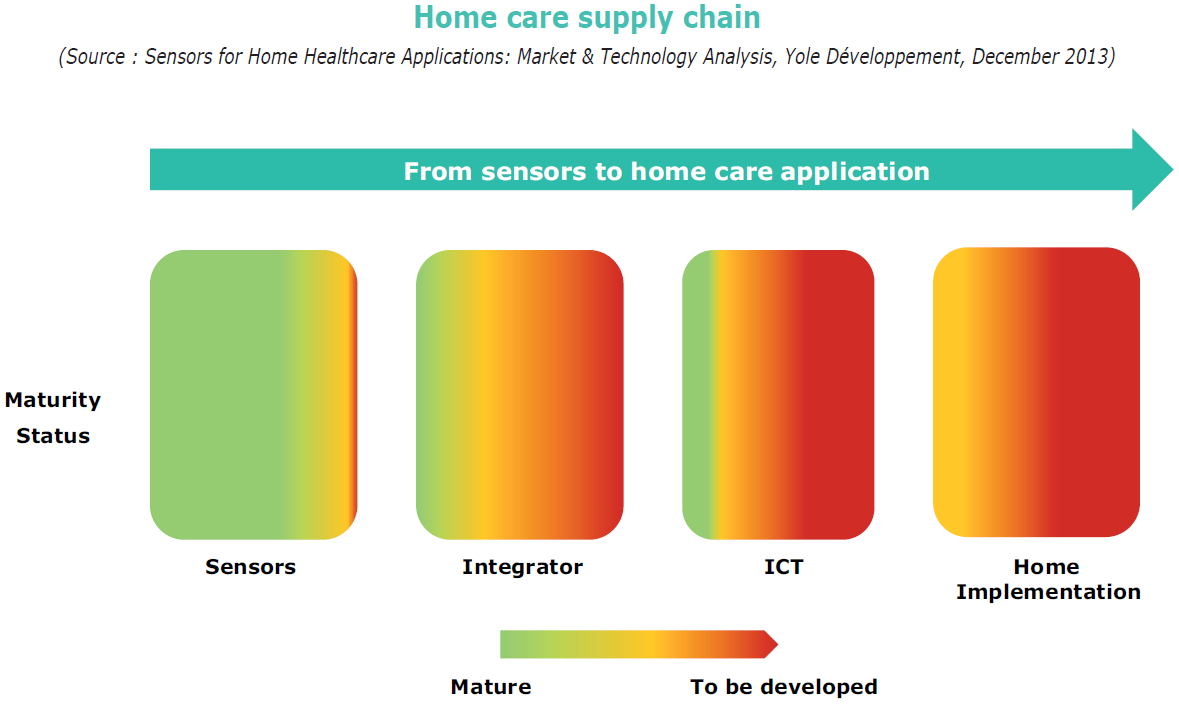Sensors for home care market to double in five years
Yole Développement's report, Sensors for Home Healthcare Applications: Market & Technology Analysis, provides a complete overview of the advanced home care market and applications. It describes market trends and challenges, including forecasts, a detailed supply chain and a special focus on ICT.
In the first 50 years of this century, the proportion of the world’s over 60 population is forecast to grow from about 16% to 25% - correlating with a marked growth in chronic diseases such as Alzheimer’s, diabetes and cancers. With rising healthcare system costs and a shortage of physicians, home care is expected to be grow rapidly.
Home care, or home healthcare, is the at-home care provided to a person with special needs, including people who are ageing, chronically ill, recovering from surgery, or disabled. When a patient is relocated from a hospital to his/her home, sensors are required to maintain the same level of care quality with fewer human involvement. They are vital replacements for specific applications usually performed by nurses, such as guaranteeing the patient’s comfort, ensuring their safety, monitoring body parameters and treatments, and drug delivery. Sensors for home care cover five segments, smart drug delivery, patient safety, diagnostics, continuous patient monitoring and patient comfort, with current and future medical devices and their related sensors detailed for each segment.
The report investigates accelerometers, barometers, electrochemical biosensors, flow sensors, gyroscopes, humidity sensors, IR temperature sensors, magnetometers, microfluidic chips, microphones, photodetectors, pressure sensors, proximity IR sensors, RF MEMS, RFID, and strain sensors (which all have various applications in the home care market, from fall detection systems to tremor monitoring in Parkinson’s disease). Market data and unit/value forecasts are provided for each sensor. Today, the most commonly used sensors are photodetectors, pressure sensors and electrochemical sensors.
ICT is increasingly important for home care applications, providing accessibility to healthcare for home-based patients with chronic illness. Despite being increasingly used in healthcare in recent years, inter-country efforts have become fragmented and could benefit from improved cross-border coordination. Yole Développement analysts describe how ICT systems work, the benefits and drawbacks to using it in home care, and the remaining challenges.

With an immature entire system, the supply chain for sensors in home care applications is still under construction. While sensor manufacturers are prepared to supply qualified MEMS sensors, integrators, ICT and home implementation faces many challenges. A whole chapter of this report focuses on the general challenges present at each supply chain level, and the main trends. The report also list the main players at each level, especially at the more mature MEMS sensor level.





